#keratinized plates
Text
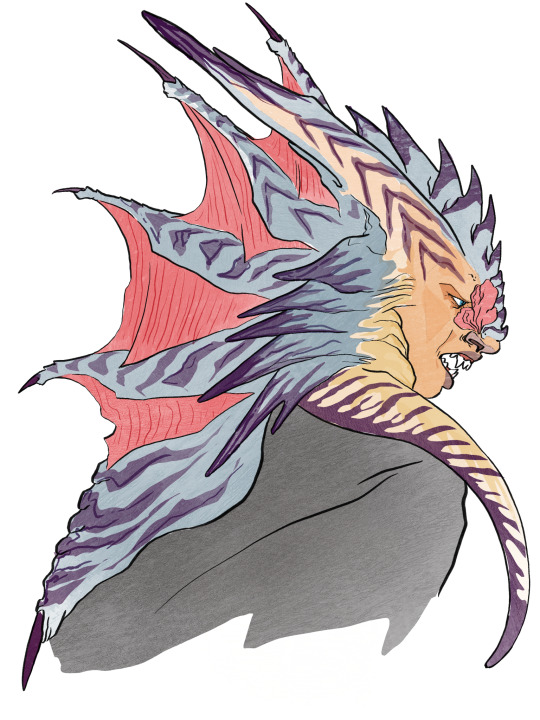
Threat Display
#myart#togrutakin#togruta au#anakin skywaker#tog’s have got keratin plates on their lekku that flare up when agitated#with fleshy membrane under that flushes bright red with blood#usually it’s only something they do when afraid or pissed off#but anakin’s are almost always slightly flared
90 notes
·
View notes
Text
Merformer designs but instead of the plating terminating sharply and cleanly, the protoform between the "plating" gets more and more obvious as the plates get smaller and further apart as the aquatic part begins
#maccadam#transformers#juuust think of it#i can see actually replacing the metal for bone or keratin being an easy swap#merformers#look i am a paleonerd and just think about how the plating can fade into mere osteoderms across the tail
14 notes
·
View notes
Text
Integumentary Accessory Structures: Nails
Integumentary Accessory Structures: Nails
Within the integumentary system, four main accessory structures aid in thermoregulation, sense of touch, protection, and much more. These four main accessory structures are:
Hair FolliclesNailsSebaceous GlandsSweat Glands
https://teachmeanatomy.info/upper-limb/misc/nail-unit/
The nails can be found on the tips of your toes and fingers. The main function of these structures is to protect these…

View On WordPress
#accessory structure#anatomy#animals#biology#blog#college#cuticle#dermis#eponychium#facts#fingers#follow#glands#hair#Integumentary system#keratin#lunula#nail bed#nail fold#nail plate#nail root#nails#nature#phalanx#photography#science#subscribe
7 notes
·
View notes
Text
I love birds so much. The range. We have tiny cute ones like hummingbirds and downy woodpeckers and intelligent ones like corvids and colorful ones like the birds of paradise. And then there’s the Actual Fucking Dinosaurs.
#the existence of Cassowaries fascinates me beyond anything#like#it has a crest.#not a feather crest. no it’s fucking keratin plated#it’s HUGE and it’s got BULLSHIT CLAWS LIKE#is anyone else just?? that’s a dinosaur#that’s a whole ass dinosaur .#I know technically all birds are dinosaurs but that??? that’s a capital D Dinosaur#no way around that. man#nebula rambles
5 notes
·
View notes
Text
quick li fluff
(i need him so bad)
cw: dragon hybrid zhongli x gn!reader, just fluff :) | not proofread
Waking up in Zhongli's comfortable, spacious Liyue apartment is like heaven on Earth, with light bathing your sleep-ridden form through a gap between the curtains as you crack your eyes open to be greeted with a sight that immediately brought a dreamy smile to your face.
A half-dragon, half-man was sitting with his back against the bedframe, a novel in one hand and mesmerizing golden irises moving in saccades across line after line of text. The man's strong, dark bronze horns protruded from his head elegantly, like decorative pillars sculpted by the most talented artist in the world. His hands, large, dark, and adorned with glowing golden veins flipped page after page in his book as he continued his leisurely reading. His deep chocolate hair, with its ends glowing softly in the dimness of the room, was draped across his broad shoulders--- a refreshing sight compared to his usually tightly-contained ponytail that he wore during the day. His loose sleep shirt, a soft cotton fabric with a deep V-neck, allowed for just enough for the imagination, revealing the slight chisel of his chest and the pale skin of his slender neck.
When he noticed your eyes roaming across his form, he smiled, showing off his sharp dragon fangs. "Good morning, darling. Did you sleep well?" He placed his novel on the nightstand and reached over to gather you in his arms. His firm biceps did something to your sleep-ridden mind, making you giddy. You snuggled into his half-exposed chest, mumbling to yourself. "Mmph, it was good... let's stay here a little longer."
Zhongli hummed in agreement and began massaging your scalp with his draconic claws (a few clipped to bluntness). Half your face still in his chest, you noticed his tail flicking back and forth gently on the sheets. Curiously, you reached for the scaled appendage, wrapping your hand around its base and stroking down towards the end, along the grain.
It was rare for Zhongli to be in his dragon form. He of course, couldn't risk revealing it in the Harbor, and though he trusted you wholly, the only time he exposed that side of himself to you was during his heats, when golden veins and scales were unable to be hidden.
You continued your ministrations, running your nails across deep brown scales, listening to the clicks of keratin on keratin as row after row of draconic plates were passed under your fingers.
Suddenly, you felt a vibration under where your face was resting, followed by a deep grumble. Tilting your head up, you were met with a flustered Zhongli and an adorable pink blush spread across his cheeks. You stared into his warm chocolate eyes with a mischievous smile on your face. He only tightened his grip on you as you moved further down his tail, until your fingers felt the soft golden fur at its end.
Playing with his fur and admiring its shimmery hue, you indulged in the unceasing purrs from the man holding you ever so closely. The rumbles traveled through your whole body, and you thought that this might be the best part of having a draconic partner.
Then ceasing your stroking, you moved your hands to cradle his pretty face, and pressed a kiss to his unblemished lips. "You should be a dragon more often," you breathed against his mouth.
#dragon zhongli x reader#zhongli x reader#zhongli x male reader#dragon zhongli#genshin headcanons#genshin x reader#genshin impact x reader#genshin impact imagines#genshin impact headcanons#genshin fluff#genshin hybrid au#genshin ftm reader#genshin imagines#genshin impact x gender neutral reader#genshin impact x male reader#genshin x male reader#genshin x you#hydroj1ns fluff
456 notes
·
View notes
Text

Happy Fossil Friday! This photo is a blast from the past. Snapped circa 1959, it features a visitor admiring the iconic Stegosaurus. With its plated back, spiked tail, and tiny head, it’s one of the Museum’s most recognizable dinosaurs. This large herbivore, which lived during the Jurassic some 140 million years ago, could reach lengths of more than 28 feet (8.5 meters).
This armored dinosaur likely used the distinctive plates along its back for display, to attract mates, or signal its own species. Fossils of stegosaur plates are criss-crossed with grooves for blood vessels, indicating that they were covered with skin or keratin (the material in your fingernails) when the animal was alive.
See Stegosaurus up close in the Museum’s Hall of Ornithischian Dinosaurs! We’re open daily from 10 am-5:30 pm. Plan your visit!
Photo: Image no. ptc-876 © AMNH Library
#science#amnh#museum#fossil#nature#dinosaur#natural history#paleontology#animals#stegosaurus#did you know#fact of the day#jurassic#archives#flashback friday
370 notes
·
View notes
Text

'While some of the armored rattiles known as shingles live firmly on dry land, and another class, the seashingles, living entirely in the open ocean, some species dwell in the numerous inland bodies of fresh water all so abundant in the Middle Temperocene, with its ponds, lakes and streams conducive to the flourishing of an assorted diversity of life. The pond turtduck (Anatochelymys atla) is one such species of freshwater shingle, foraging at the bottom of ponds with its broad flattened snout to feed on an assortment of food, ranging from algae and aquatic plants to freshwater snails, clams, worms and other invertebrates that it stores in its cheek pouches and chews when it surfaces to breathe. Found mostly across Gestaltia's tropical regions, the pond turtduck, defended by its sturdy skeleton and protective keratinous armor plates, is largely unconcerned with enemies, feeding at its own leisurely pace--though, if an aggressor proves persistent, the sharp raking claws on its flipper-like limbs acts as an additional deterrent, particularly on land where the turtduck is clumsy and unsuited for a quick getaway.'
-----------
#speculative evolution#speculative biology#spec evo#speculative zoology#hamster's paradise#art one shot
107 notes
·
View notes
Text

An update of how Tovoxrans' hands look. They have evolved thick plates covering their hands and forearms, built mostly of keratin. Their main purpose is protecting the hand from taking damage while digging for food. They also evolved long, shovel-like claws, but nowadays they are usually permanently removed when Tovoxrans are still children, due to the discomfort of doing daily activities with such long claws.n update of how Tovoxrans' hands look. They have evolved thick plates covering their hands and forearms, built mostly of keratin. Their main purpose is protecting the hand from taking damage while digging for food. They also evolved long, shovel-like claws, but nowadays they are usually permanently removed when Tovoxrans are still children, due to the discomfort of doing daily activities with such long claws and lack of their functionality.
#myart#alien#alien species#original alien species#sci fi#science fiction#speculative evolution#speculative biology#spec evo#spec bio#worldbuilding#creature#creature design#xenobiology#tovoxrans
96 notes
·
View notes
Text
Wet Beast Wednesday: blue whale
It's the one-year anniversary of my Wet Beast Wednesday posts. My first post was on the smallest of all cetaceans, the vaquita. For the anniversary, I'm going to go to the other end of the spectrum and cover the largest of all cetaceans: the mighty blue whale. Join me as we explore the biggest of bois, the largest of lads, and the absolutest of units.

(Image: a blue whale at the surface of the ocean, seen from above. It is long, slender, and grey. The head is the widest point and takes up about a quarter of the body. The blowholes are positioned at the back of the head. Two flippers emerge from the body just behind the head. The tail fluke is very broad and pointed. End ID)
Blaenoptera musculus, the blue whale, is divided into four subspecies based on size and location. These are the northern blue whale (B. m. musculus), the north Indian ocean blue whale (B. m. indica), the antarctic blue whale (B. m. intermedia), and the pygmy blue whale (B. m. brevicauda). The northern and pygmy whales are further subdivided into population stocks based on what part of their range they live in. Blue whales are not only the largest cetaceans, they are the largest known animals to have ever existed. There are animals that can get longer, like the lion's mane jellyfish, but blue whales are the most massive animals. There are some extinct species that could potentially meet or exceed the blue whale in size, including some ichthyosaurs, whales, and sauropods, but all those species are known only from skeleton fragments so we can't get a fully accurate estimate of their size. Size varies depending on subspecies and population stock, but the longest group are the eastern north Pacific population, which can reach an average 24 m (79 ft). The antarctic subspecies is the heaviest, averaging 130 metric tons (290,000 lbs) for females. Females are larger than males. The pygmy subspecies is the smallest, though small is a relative term as they can still average 21.3 m (69.9 ft) and 99 metric tons (218,000 lbs). The longest scientifically measured individual was 30 m (98 ft), though there are unconfirmed reports of longer ones. The heaviest blue whale on record weighed 173 metric tons (381,400 lbs), though there are whales estimated to get up to 199 metric tons (438,720 lbs). Blue whales also have the largest hearts of any animal. One specimen measured in at 180 kg (400 lbs). The heart is about the size of a golf cart and 4 or 5 people could fit inside the chambers without having to squeeze. There's a commonly-quoted factoid that a person could swim through a blue whale's arteries without touching the sides. I wasn't able to find any exact measurements to confirm or refute this. I did find some sources saying that the blood vessels are highly elastic so its possible the factoids are talking about the arteries at their most stretched. Each heartbeat moves 220 liters of blood and the total blood volume is estimated at 5,300 liters. The heartbeat can be heard two miles away. I really just want to impress on you that these animals are fucking massive. A study on hydrodymanics suggested that a blue whale couldn't get longer than 33 meters (108 ft) before its metabolic and energy requirements would exceed the amount of food it could eat. Blue whales are verging on what is theoretically the maximum amount of big a whale can be.

(Image: an illustration comparing the size of a blue whale to other animals and showing their size. The whale is about as long as a line consisting of a polar bear, grizzly bear, human, asian elephant, giraffe, and great white shark. End ID. Source)
Blue whales are baleen whales, meaning that instead of teeth they have thick, keratinous plates called baleen attached to the upper jaw. When feeding, blue whales open their mouths and swim through clouds of krill. The mouth can open to 80 degrees and folds at the bottom let it expand to fit 220,000 liters of water at a time. The whale them closes its mouth and forces water out through the baleen. The baleen acts as a sieve, trapping krill in the mouth to be swallowed. Blue whales target patched of krill with the highest densities as their feeding style requires a minimum of 100 krill per cubic meter to offset the energy cost of feeding. Most mouthfuls provide 8,312 to 475,141 kilocalories of energy, more than enough to offset the cost of feeding. The current estimate for how much krill an adult needs in a day is 1,120 ± 359 kg (2,469 ± 791 lbs) and pregnant females need even more than that. Blue whales will dive in search of food, with the deepest confirmed depth being a pygmy blue whale that reached 506 m (1,660 ft). The deepest known dive from a non-pygmy blue whale was 315 m (1,033 ft). The longest recorded dive was 15.2 minutes and the estimated maximum dive duration is 31.2 minutes. During dives, a blue whale's heartbeat slows to 2 beats per minute, the slowest of any known animal. The elastic aorta seems to take over a lot of the heart's pumping job during this time. Blue whales are streamlined and similar in appearance to the relates sei whales and fin whales. Blue and fin whales are capable of hybridizing and producing fertile offspring. 3.5% of the blue whale genome comes from hybridization with fin whales. While blue whales can produce hybrid offspring with fin whales, the reverse is not true and the gene flow from fin to blue is unidirectional. It appears that all hybrids are the result of a fin father and a blue mother. Interestingly, blue whales do not appear to be capable of hybridizing with the more closely related sei whales. There are unconfirmed reports of blue whale and humpback whale hybrids. And because someone was going to bring it up if I didn't, the blue whale's penis is the largest of any animal at 3 m (9.8 ft) long and 30 cm (12 in) wide and they can release an estimated 17 liters of semen at a time. I know someone out there desperately wanted to know that and to that person I say you're whalecum.

(Image: a blue whale feeding at the surface of the ocean on its side, seen from above. The mouth is open with the troat and lower mouth inflated. It is swimming into a patch of krill, visible as yellowish coloration in the water. End id)
Blue whales can be found worldwide, though they typically prefer colder water and do not enter the Arctic ocean. They are usually solitary or travel in pairs, but can gather in groups up to 50 strong when food is abundant. Many are migratory, feeding in cold water during the summer and moving toward the equator in winter. They can follow complex migratory patterns that have to be memorized. There are multiple different strategies employed by different populations regarding who migrates when and some populations don't migrate at all. Their vocalizations are used for long-distance and short-range communication and scientists have classified multiple different types of sounds produced. Different populations of whales have different patterns of vocalizations which may be akin to languages or dialects. Blue whale sounds are some of the loudest and lowest frequency produced by any animal and most are too low-frequency to be audible to humans. Mating season happens in winter. Males use vocalizations to attract females, who they then court through special noises, blowing bubbles, inflating their mouths, chasing, and slapping the water with their flippers. Males compete with each other for the chance to mate. Once a female chooses a male, they will mate and then separate. Gestation takes 10 to 12 months. Newborn blue whales are the largest babies in the animal kingdom at 6-7 m (20-23 ft) and 2-3 metric tons (4409 to 6614 lbs). Mother produce between 110 and 320 kg (240 - 710 lbs) of milk daily. Claves are weaned between 6 and 8 months once they hit 16 m (53 ft) and have gained about 17,000 kg (37,500 lbs). Females typically mate every 2 to 3 years. Blue whale become sexually mature at 8-10 years old and can live over 90 years, with the oldest on record being 110 years old. Their age can be determined by earwax, which is laid down in rings like trees.

(Image: a mother blue whale (background) and calf (foreground). The baby is already very large and is a lighter grey than the mother. The baby is seen from the sied while the mother is rotates to show her underside. End ID)
All blue whale subspecies are classified as endangered by the IUCN, with the antarctic subspecies being critically endangered. Blue whales were heavily impacted during whaling, with their population dropping to the point of near-extinction. Since the end of whaling, populations have risen to an estimated 10,000 to 25,000 as of the end of 2023. This is still smaller than their pre-whaling population, but they have recovered quite a bit. The current largest threats to blue whales are climate change, collisions with ships, and human created noise. The effects of anthropogenic noise from shipping lanes on aquatic animals is still poorly understood, though it seems to greatly irritate and even harm whales, forcing them to change their migratory routes and avoid shipping lanes. Interestingly, as the population has increased scientists have noted changes in courtship behavior and vocalization tone. It is hypothesizes that the increasing population is resulting in greater competitive pressure between males for the right to mate.

(Image: a blue whale seen from the side. Its head is toward the camera. The lower jaw as larger and thicker than the upper jaw. The animal is streamlined. The eye is just behind the mouth and small. Further back is a paddle-shaped flipper. End ID)
#wet beast wednesday#blue whale#whale#whales#cetaceans#cetacean#marine mammals#baleen whale#marine biology#biology#zoology#ecology#animal facts#informative#image described#science#absolute unit#big#anniversary
68 notes
·
View notes
Text
I Know a Place ~ 1
~ Spiderverse x Fem!Spider!Reader
~ Reader is shorter than Miles, Pav, and Hobie, but appearance is otherwise not mentioned
~ Possible love interest include: Miles Morales, Hobie Brown, Gwen Stacy, Pavitr Prabhakar, Earth 42 Miles, and Margo Kess.
~ Reader is a newer spider, who, after losing a fight against an anomaly that found its way into her universe, is consoled by her friends.
~ Wc: 1.9k
~ You can find more of my works here
~ Contents include: Fluff, Romance, Mostly platonic as of now, Slight angst, Comfort, Horror, Mentions of blood, Intimate non sexual touch, Slight Yearning.

Somewhere, in New York . . .
A group of teenagers clad in brightly colored spandex suits, sit in a booth at a small cafe. The cafe itself is a cozy, little hole-in-the-wall, known only to those lucky enough to live nearby. The teenagers rest their tired bodies, allowing their muscles to melt into the soft leather seats, as they're embraced by the warm aroma of nutmeg, cinnamon, vanilla, and cocoa.
The calming scents swirled in the air, providing the teenagers a much needed sense of comfort and relief. They chatted amongst themselves, some excited from the battle they had just won, some wearily listening and occasionally providing their own input. All engaging in the conversation one way or another. All except for one.
One of the teenagers sat silently staring into her drink. Her mind, like her peers, was still on the fight the had just walked away from, though unlike them, she wasn't exactly satisfied with the outcome. She tried to focus her gaze on the hot beverage clasped between her hands, and not on the dirt and blood splattered on her gloved fingers.
Everytime she closed her eyes she could still see it.
Horror starts here -
Previously . . .
He was an anomaly, a horrifying variant of the criminal Rhino. He was a massive man with stocky , tree trunk-like stubs for legs. He had huge, muscular arms, his fingers were thick nubs, a solid plate of keratin from his first knuckle to the tip of his fingers. Despite his giant stature, his bodybuilder physique, and his inhuman limbs which were covered in tough, dark grey skin, the characteristic that most caught the teenager's attention was his face. Two massive tusks sprouted from his skull, piercing his flesh, and causing dark blood to leak over his head, face and shoulders.
He was clearly in pain, screaming as he flung any and everything he could lift over his head. Cars, fire hydrants, chunks of sidewalk. Nothing was safe from him in his rampage. He spared no mercy as he threw objects towards innocent civilians. Thankfully, by the time Y/n had gotten there, most of the bystanders had already fled the scene, and the few that remained were quickly moved to safety. The teenager turned her attention back to the rhino-man as soon as the last citizen was safe and secure.
"You really do live up to the n-"
Y/n could barely get a word out before she was flung into the side of a building. She slowly rose to her elbows, her head spinning as broken glass clattered onto the ground around her. She felt something warm and wet run down on cool on her face beneath her mask. She hobbled to her feet the minute the loud, incessant pounding in her head stopped, another quip already on her lips, only to be interrupted once again by a whack to the face. She felt like she'd been hit with a wrecking ball as she flew through the air.
Horror ends here -
She crashed into the pavement, her head smacking the ground that cracked around her, before slowly rolling to a halt. She tried to push herself back up, with what felt like boneless arms. Her arms weakly trembled before collapsing beneath her weight. Fear rushed through her veins as the sound of thunderous footsteps approached her weakened body.
Y/n squeezed her eyes shut, her fists clenched and her breathing quickened as she braced herself, preparing her body to take more abuse. She felt dread embalm her entirely, her sweat cold on her skin, as the Rhino rose his arms above his head.
But before the Rhino could bring his clubbed fists down upon Y/n's crumpled body, the loud riff of an electric guitar rang through the air.
Her eyes remained closed, as bright yellows, purples, and blues flashed across the sky in blinding geometric shapes. Y/n's stiff body ironically relaxed at the sound of fighting and music, her body and mind fully exhausted. She only began to open her eyes when she heard a familiar voice softly calling her name, gently coaxing her to rise to her feet.
Currently . . .
Y/n sat near the window, strictly gazing into the mug between her hands. She had been so focused on her own moping she hadn't noticed the conversation around her had begun to lull.
"Y/n, you alright there, bruv?"
Her head snapped up, her attention suddenly placed on the british man seated across from her.
"Huh!?" Y/n's gaze drifted to the other teenagers sitting with her, unintentionally now the center of their attention. "What do you mean? I'm fine. I'm okay."
The teenagers around her exchanged glances before turning back to her. "Y'know, it's okay if you aren't okay, though," Gwen, the blonde sitting beside her replied, her voice had been the one to pull Y/n from her pained stupor. Gwen gently placed her cup of hot cocoa onto the table in front of her, before lightly stroking Y/n's forearm with her thumb.
"I know, I'm okay. Really. . . I am." Y/n dropped her gaze back to the hot, sweet smelling beverage in her hands. The cafe the teenagers took refuge in had some of the best food and drinks any of the spider's had ever had. It was a family business, run by an older couple and tended to by their granddaughter. It had been a place of comfort for Y/n since she had come across it while chasing a pickpocket down an alley.
Unconvinced, the rest of the teens sat quietly. "Is it about the fight cause if it is you got nothing to worry about" said miles, a chocolatey ring on his top lip. "When I was 'bout a month into being Spider-man, I had to fight Scorpion." Miles shook his head. "Lost so bad, it was on the news. My mom heard about it."
"Really?" Hobie questioned, taking a bite of his pastry, "That bad, huh", he followed earning a glare from Miles.
"Oh please, that's nothing! When I first became Spider-Woman, I got absolutely wrecked by Doc Oc! I got publically laughed at for two weeks!" Countered Gwen, her hands moving as she spoke. "I couldn't go out without hearing someone laugh about it."
Hobie chuckled, causing Gwen to toss a large marshmallow in his direction, "And what of you, Pav?"
"First of all, what about you, Hobie? You've never lost a fight?" Said Pavitr, flustered at the sudden attention. "Oi we'll get there when we get there, yeah? Your turn."
Pavitr sat back in the booth, his hand raised to his chin as he thought of his most embarrassing loss. "One time I . . . got . . . a got a bloody nose through my mask?"
"Yeah, but did you lose?" Asked Miles.
". . .no. But it was on TV!" Pavitr raised both hands in defence after earning a playful groan from the whole table, "Of course not", and "No surprise there" flying from his friend's mouths.
"I'm sure mine will happen sooner or later!" Pav turned to face Hobie once again. "Okay, okay, your turn, Hobie. Tell us your most embarrassing story." Hobie sniffed, leaning back and putting his arms behind his head. "What's there to talk about, mate? I never lose."
"Right." It was the first thing Y/n had said with a smile on her face. Hobie glanced over at her, a soft smile replacing the frown she wore earlier. Hobie straightened in his seat, "Well-I mean- I-This one time right," Y/n laughed at his sudden disposition, "I was just off holiday, y'know, so of course I'm gonna be a bit rusty, a little out of it, y'know," the table began to giggle at his frantic excuses.
"But yeah, I'd just come off holiday, I start to swing around, warm up, got my blood flowing again, out of nowhere, this-this airship comes flying my way, absolutely massive, comes outta nowhere," "Oh it came at you, did it?" Pavitr asked between laughs. "Yeah," Hobie claimed, a faux irritation coating his words "It came at me, Pav man, you even listening? So it comes at me," he continued.
"I'm looking down, hundreds of adoring fans below, all lookin' back up at me, my senses kick in, little too late, yeah, but they do," Miles wheezes at Hobie's erratic retelling, his fist lightly pounding the table, as gwen writhes in her seat with her head thrown back. Y/n and Pavitr exchange glances with tears in their eyes whenever Hobie stumbles over his words or repeats himself.
"I look up at just the right time for the universe to take it out on me, i guess, and then WHAM! I smack into the aircraft, face first, all my fans still watching me as I plumet to certain death, just laughing, like I don't protect them everyday from the cold, greedy hands of a power-abusing, capitalistic, autocratic, and bigoted nightmare!"
By now every teen at the table is in hysterics, laughing so loud the table shakes with all their food and drink. Hobie and Miles have taken the slapping each others arms, as they cackle at Hobie, as Gwen has visible tears pouring down her face.
After being yelled at for being to loud and calming down, the group sits in a pleasant silence. Y/n sighed, yeah, today could've gone better for her, but in the end, she was thankful she had the kind of friends willing to embarass themselves to make her feel better. "Thank you, guys," Y/n mumbled out, a happy yet somber expression on her face, as they began to meander out of the cafe. "For tonight, and for . . . earlier."
"Aye, no problem, Y/n," Miles said, slipping an arm over her shoulder and looking into her eyes, a warm grin spread across his dimpled cheeks. "Any time." Pavitr gently stroked her knuckles with his thumb as he held her hand. The teens took off in the direction of Y/n's home, joking all the way. They saw her safely to her door.
Noticing the time, Gwen turned to Y/n and wrapped her arms tightly around her shoulders. "I'm sorry, I gotta get going," she saldy muttered as she squeezed Y/n. She pulled slightly from their embrace. "But I'll see you tomorrow?" Gwen stared into her face for confirmation, a playful smirk rising to her face as her cheeks heated up. "Bye Gwen, I'll see you tomorrow." Y/n felt her own cheeks grow warm, a little dismayed when Gwen fully pulled her arms from her.
Pavitr swallowed her form in his own muscular arms from behind, resting his cheek on her head. "I have to leave too," He groaned. Y/n giggled as he complained, a playfully sad look on his face. "I'll see you tomorrow too, Pav." Y/n laughed again as Hobie had to physically pull Pavitr away from her, before squeezing her shoulder himself and winking as he stepped through the portal.
Miles was the last to leave, he always was. He wanted to make sure Y/n was okay, having been no stranger to messing up himself. "You good?" Y/n sighed again, but this time it was filled with much less sorrow. She looked up at Miles and felt a warm smile rise to her lips. "I'm good Miles . . . Thank you. Really." Miles shrugged his shoulders as he beamed at Y/n before hugging her goodbye like the others. He lingered, just a bit, before letting his arms slip from her shoulders.
Miles stepped towards the portal, turning to grin at Y/n for the last time that night.
#astv#across the spiderverse#spiderman#miles morales#miles morales x reader#gwen stacy#gwen stacy x reader#hobie brown x reader#hobie brown#pavitr prabhakar#pavitr prabhakar x reader#y/n#astv x reader#astv fanfic#margo kess#margo kess x reader#earth 42 miles morales x reader#earth 42 milse morales#miles morales 1610#bizbat
239 notes
·
View notes
Text
ADA TIME

Given her very fun grapple mechanic and nature of weaving webs of plans to best benefit her, I thought a spider would be the obvious creepy crawly to base her off of!
The most obvious mutation is her secondary set of arms. These are extensions of the plagas limbs, similar to Ashley’s wings. UNLIKE Ashley’s wings though, these arms have bones (a loss for the crabs unfortunately). This is because they are VERY STRONG and capable of holding Ada (as well as others) body weight and this muscle needs a rigid structure to pull on. The keratin layers of her armor will help defend her from attacks but they aren’t a strong enough structure to constitute a real exoskeleton. They have 3 fingers and 1 thumb, and are less dextrous than Ada’s primary hands.
The claws and grooves in her fingers on both her primary and secondary hands are to help her keep hold of and manage her web. Her silk comes from spinnerets located on her mid back on either side of her spine. They house her silk glands, spinnerets, and muscular valve which allows her to control when web comes out. Spider silk at this thickness would be stronger than steel, and around 1/5th the weight! It clumps at the end to allow for easier throwing to other areas so she essentially has a natural grappling hook. She could also use it as a weapon, like a whip.

MOAR MANDIBLES. MOAR EYES. RAAAAAGHHHHHH.
Ada's primary eyes are the only ones with eyelids. Her secondary eyes located on her cheekbones and brow-bone always remain open. They greatly increase her awareness of her surroundings by widening her peripheral vision. Cant get snuck up on if you can see real far around you.
Her mandibles tuck into her mouth, just behind her teeth. They fit through a hole made in her teeth that was made by removing her top canine. To keep the appearance of a normal smile, she has a false tooth on the front of her first mandibular joint that fits where the original would be. These mandibles have venomous fangs at the ends that allow her to bite as self defense. There are flexible sections that allow for the mandibles to easily extend and retract in and out of her mouth comfortably (well. relatively comfortably).
Her general proportions are slightly elongated. Being stretched slightly at the joints. This applies to her primary arms and legs, which also have an armor plating to allow for more impactful kicks.
NOW. BEHAVIORAL CHANGES. Ada will feel most comfortable when resting on a web that she has woven. The high concentration of nerves on her fingertips allow her to sense any vibrations that may travel through her web, so she is always aware of any threat at any time. This also encourages her to become a more tactile person. Understanding the texture, shape, and temperature of something through touch will become very important to her understanding of the world.
#ada ada ada ada ada ada ada#Ive spidered her. get spidered preddy lady#ada wong#resident evil 4#my art#sketch#digital art#infected!ada#everyone is infected au#<- what I'm officially calling this au
83 notes
·
View notes
Note
Do you know any Dino facts ?
Of course!!
Ps. that's such a great question, thank you!! <3
My favorite fact is that dinosaurs lived everywhere around the world, so you could stand right over some of their bones at this exact moment and not even know it!! :0
Another really cool fact is that stegosaurus had 17 plates on their back, called scutes. Even though they were made of a bony material called osteoderms they weren't solid. Instead they had interlaced structures and blood vessels throughout, like turtle and tortoise shells!! So, they might have had feeling/ sensation in them aswell. <3
And lastly (for now), the horns on a triceratops where made of keratin, which is the same substance than not only rhino horns, but also human fingernails are made of!! :D
.゚。.・.*.゚☆❗only interact if your blog is SFW❗☆ ゚.*.・. 。゚.
28 notes
·
View notes
Text
FOSSIL FRIDAY: STEGOSAURUS
Stegosaurus, the "roof lizard" is by far the best dinosaur and that is a fact not my heavily biased opinion.
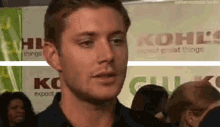
It was discovered by Arthur Lakes in Morrison, Colorado

and named by your boy, Marsh.

Originally, poor Marsh believed Stegosaurus to be some sort of turtle-like animal which is where the name originated from.
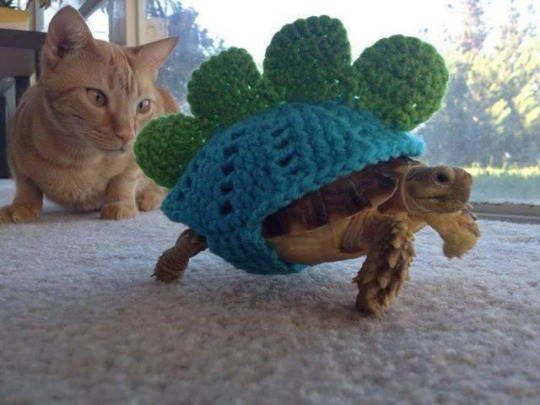
This is one of the first dinosaurs we learn as kids due to the recognizability of the plates and spikes.

(this comic is far too relatable haha)
Stegosaurus was over 20ft long and weighed several tons.
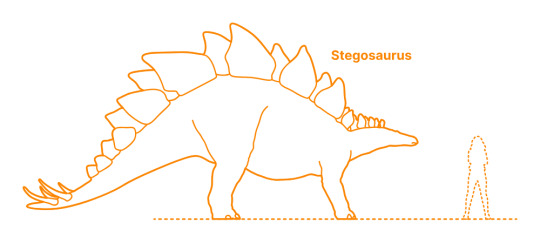
It had a small skull with small, triangular teeth in the back of its mouth for grinding. There were no teeth in the front of the mouth which was probably covered by a keratinous beak.
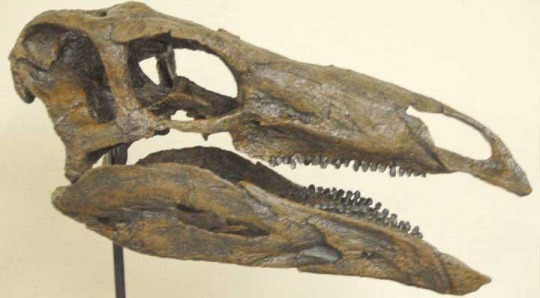
Stegosaurus had around 10 cervical (neck), 17 dorsal (back), 4 sacral (hips), and 46 caudal (tail) vertebrae. The dorsal verts were stretched and the caudal neural spines began to bifurcate (split) halfway down the tail.
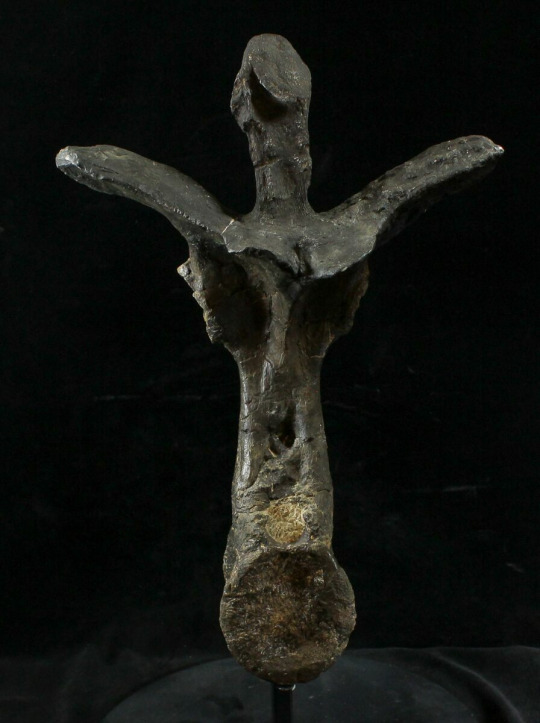
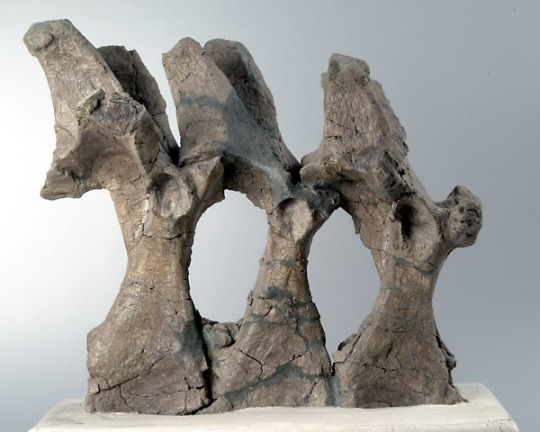
They have three toes on their back feet and five toes on their front feet.
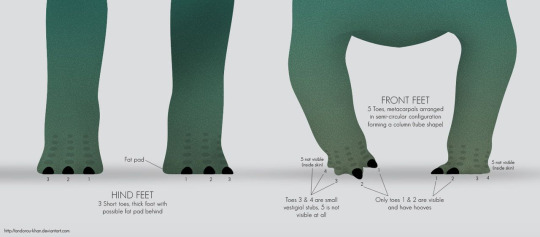
The most recognizable parts are, of course, the plates and spikes. Both of these are highly specialized osteoderms (bony cored scales) similar to modern crocs.

The largest plates were over the hips and were up to 24 in (60cm) wide and tall. The function of the plates has been hotly debated for a very long time. I even wrote a paper about it in one of my paleo classes in college. There are blood vessels running throughout the plates which make them pretty poor for physical defense. However, they would potentially be ideal for flushing blood into and changing the color just like modern lizards.
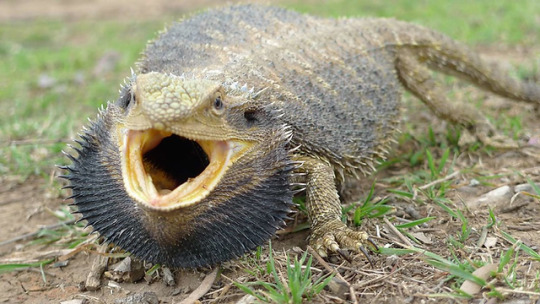
This could be used for aggressive behaviors, male to male warnings or to warn predators to back off. The plates could certainly make a Stegosaurus look larger than it really was. Now, that doesn't mean they were completely without protection. A study done in 2010by Christensen and Tschopp found skin impressions on Hesperosaurus plates and determined it probably had a keratin sheath over the plates making them stronger. Another possible use of the plates was thermoregulation. They could have dumped excess heat the way cattle horns or duck bills do today.
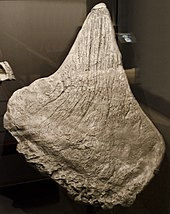

Then, there's the thagomizer. The word actually came from a Far SIde comic and paleontologists liked it so much we just sort of...adopted it.
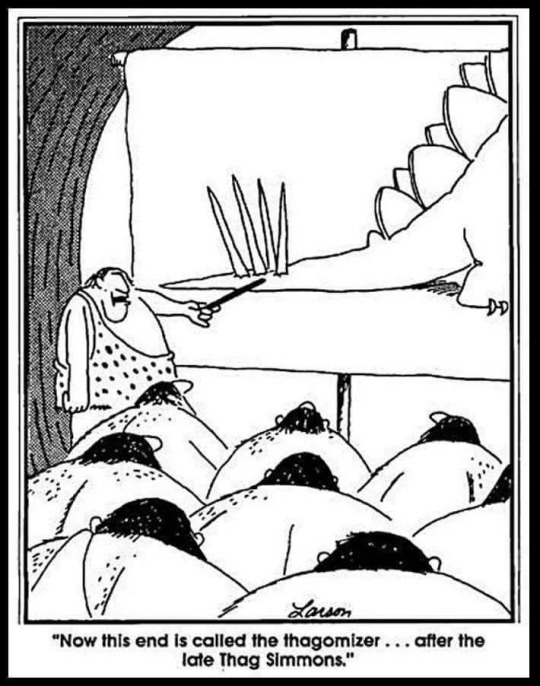
And can you believe there's actually been debate over whether they actually used them?
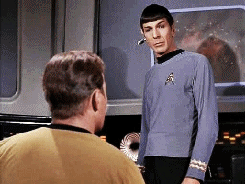
Robert Bakker believed the tail was flexible enough (despite the argument that the plates would make this impossible) to be a weapon due to a lack of ossified tendons seen in other dinosaurs to stiffen the tail. He also said that the front legs were muscular enough to allow it to deftly swivel it's back half threateningly. McWhinney and others did a study that showed high incidence of trauma-related damage to the tail and spikes implying they were, in fact, used as a weapon. Plus, there is an Allosaurus caudal with a puncture that a Stegosaurus spike would fit into snuggly.
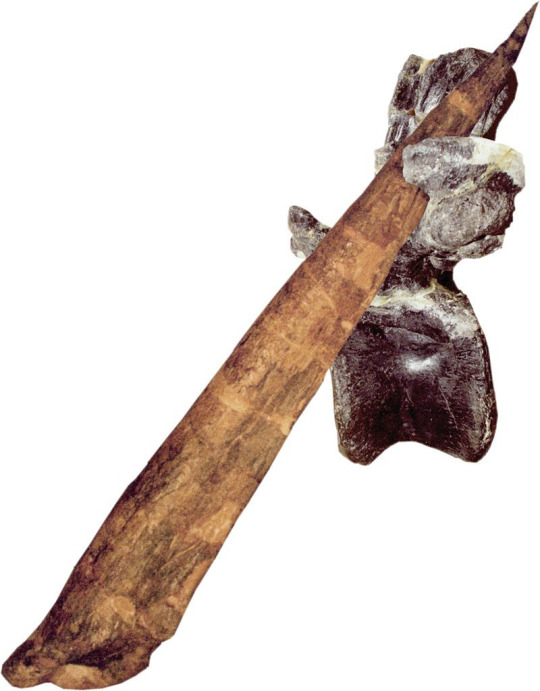
There are two, possibly three species of Stegosaurus: S. ungulatus, S. stenops, and S. sulcatus. The first is probably just a synonym of S. stenops and S. sulcatus is likely an entirely different genus. Only time and more data will tell.


S. sulcatus...which looks nothing like the others.
My absolute favorite thing about Stegosaurus is...well, there two things. First, one specimen was found with throat armor which is just freaking cool.

Second, baby stegos are called steglings. Freaking STEGLINGS. How damn cute is that?

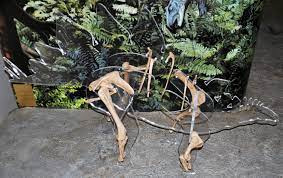
We have found a Stegosaurus tooth at the Evil Tree Bonebed and I really hope we find the animal. A baby would let me die happy. Want to help me find a Stegosaurus? Come join us this summer at CNCC for our summer field program. Check out the link below.
17 notes
·
View notes
Text
Broken wings.
Delicate hollow bones crushed in their sockets and ligaments torn to shreds, bloodfeathers cracked and bleeding
Twitchy leathery wings with ripped membranes, muscles bruised under scales, sharp edges of keratin plates digging into skin like knives, their own body turned against them.
Fragile, transparent membranes ripped off, hemolymph dripping out of severed veins with each thrum of a heart.
226 notes
·
View notes
Text
On a spring day in 1978, a fisherman caught a tiger shark in the lagoon surrounding Enewetak Atoll, part of the Marshall Islands in the north Pacific. That shark, along with the remains of a green sea turtle it had swallowed, wound up in a natural history museum. Today, scientists are realizing that this turtle holds clues to the lagoon’s nuclear past—and could help us understand how nuclear research, energy production, and warfare will affect the environment in the future.
In 1952, the world’s first hydrogen bomb test had obliterated a neighboring island—one of 43 nuclear bombs detonated at Enewetak in the early years of the Cold War. Recently, Cyler Conrad, an archeologist at Pacific Northwest National Laboratory, began investigating whether radioactive signatures of those explosions had been archived by some particularly good environmental historians: turtles.
“Anywhere that nuclear events have occurred throughout the globe, there are turtles,” Conrad says. It’s not because turtles—including sea turtles, tortoises, and freshwater terrapins—are drawn to nuclear testing sites. They’re just everywhere. They have been mainstays of mythology and popular culture since the dawn of recorded history. “Our human story on the planet is really closely tied to turtles,” Conrad says. And, he adds, because they are famously long-lived, they are uniquely equipped to document the human story within their tough, slow-growing shells.
Collaborating with researchers at Los Alamos National Laboratory, which was once directed by J. Robert Oppenheimer, Conrad was able to use some of the world’s most advanced tools for detecting radioactive elements. Last week, his team’s study in PNAS Nexus reported that this turtle, and others that had lived near nuclear development sites, carried highly enriched uranium—a telltale sign of nuclear weapons testing—in their shells.
Turtle shells are covered by scutes, plates made of keratin, the same material in fingernails. Scutes grow in layers like tree rings, forming beautiful swirls that preserve a chemical record of the turtle’s environment in each sheet. If any animal takes in more of a chemical than it’s able to excrete, whether through eating it, breathing it in, or touching it, that chemical will linger in its body.
Once chemical contaminants—including radionuclides, the unstable radioactive alter egos of chemical elements—make their way into scute, they’re basically stuck there. While these can get smeared across layers in tree rings or soft animal tissues, they get locked into each scute layer at the time the turtle was exposed. The growth pattern on each turtle’s shell depends on its species. Box turtles, for example, grow their scute outward over time, like how humans grow fingernails. Desert tortoise scutes also grow sequentially, but new layers grow underneath older layers, overlapping to create a tree ring-like profile.
Because they are so sensitive to environmental changes, turtles have long been considered sentinels of ecosystem health—a different kind of canary in the coal mine. “They’ll show us things that are emergent problems,” says Wallace J. Nichols, a marine biologist who was not involved in this study. But Conrad’s new findings reveal that turtles are also “showing us things that are distinct problems from the past.”
Conrad’s team at Los Alamos handpicked five turtles from museum archives, with each one representing a different nuclear event in history. One was the Enewetak Atoll green sea turtle, borrowed from the Bernice Pauahi Bishop Museum in Honolulu, Hawaii. Others included a Mojave desert tortoise collected within range of fallout from the former Nevada Test Site; a river cooter from the Savannah River Site, which manufactured fuel for nuclear weapons; and an eastern box turtle from Oak Ridge, which once produced parts for nuclear weapons. A Sonoran desert tortoise, collected far from any nuclear testing or manufacturing sites, served as a natural control.
While working at Los Alamos, Conrad met isotope geochemist and soon-to-be coauthor Jeremy Inglis, who knew how to spot even the most subtle signs of nuclear exposure in a turtle shell. They chose to look for uranium. To a geochemist, this might initially feel like an odd choice. Uranium is found everywhere in nature, and doesn’t necessarily flag anything historically significant. But with sensitive-enough gear, uranium can reveal a lot about isotope composition, or the ratio of its atoms containing different configurations of protons, electrons, and neutrons. Natural uranium, which is in most rocks, is configured very differently from the highly enriched uranium found in nuclear labs and weapons.
To find the highly enriched uranium hidden among the normal stuff in each turtle shell sample, Inglis wore a full-body protective suit in a clean room to keep his uranium from getting in the way. (“There’s enough uranium in my hair to contaminate a picogram of a sample,” he says.) Inglis describes the samples like a gin and tonic: “The tonic is the natural uranium. If you add lots of natural uranium tonic into your highly enriched uranium gin, you ruin it. If we contaminate our samples with natural uranium, the isotope ratio changes, and we can’t see the signal that we’re looking for.”
The team concluded that all four turtles that came from historic nuclear testing or manufacturing sites carried traces of highly enriched uranium. The Sonoran desert tortoise that had never been exposed to nuclear activity was the only one without it.
They collected bulk scute samples from three of their turtles, meaning that they could determine whether the turtle took in uranium at some point in its life, but not exactly when. But the researchers took things a step further with the Oak Ridge box turtle, looking at changes in uranium isotope concentrations across seven scute layers, marking the seven years of the turtle’s life between 1955 and 1962. Changes in the scutes corresponded with fluctuations in documented uranium contamination levels in the area, suggesting that the Oak Ridge turtle’s shell was time-stamped by historic nuclear events. Even the neonatal scute, a layer that grew before the turtle hatched, had signs of nuclear history passed down from its mother.
It’s unclear what this contamination meant for the turtles’ health. All of these shells were from long-dead animals preserved in museum archives. The best time to assess the effects of radionuclides on their health would have been while they were alive, says Kristin Berry, a wildlife biologist specializing in desert tortoises at the Western Ecological Research Center, who was not involved in this study. Berry adds that further research, using controlled experiments in captivity, may help figure out exactly how these animals are taking in nuclear contaminants. Is it from their food? The soil? The air?
Because turtles are nearly omnipresent, tracing nuclear contamination in shells from animals living at various distances from sites of nuclear activity may also help us understand the long-term environmental effects of weapons testing and energy production. Conrad is currently analyzing desert tortoise samples from southwestern Utah, collected by Berry, to better relate exposure to radionuclides (like uranium) to their diets over the course of their lives. He also hopes that these findings will inspire others to study plants and animals with tissues that grow sequentially—like mollusks, which are also found in nearly all aquatic environments.
The incredible migratory patterns of sea turtles, which sometimes span the entire ocean (as anyone familiar with Finding Nemo may recall), open up additional opportunities. For example, sea turtles forage off the Japanese coast, where in 2011 the most powerful earthquake in Japan’s history caused a tsunami that led to a chain reaction of failures at the Fukushima Daiichi Nuclear Power Plant. With lifespans of up to 100 years, many of those turtles are likely still alive today, carrying traces of the disaster on their backs.
Recently, the Japanese government started slowly releasing treated radioactive water from the Fukushima Daiichi plant into the Pacific Ocean. Scientists and policymakers seem to hesitantly agree that this is the least bad option for disposing of the waste, but others are more concerned. (The Chinese government, for instance, banned aquatic imports from Japan in late August.) Through turtle shells, we may better understand how the plant’s failure, and the following cleanup efforts, affect the surrounding ocean.
The bodies of these creatures have been keeping score for millennia. “For better or for worse, they get hit by everything we do,” Nichols says. Maybe, he adds, “the lesson is: Pay more attention to turtles.”
50 notes
·
View notes
Text
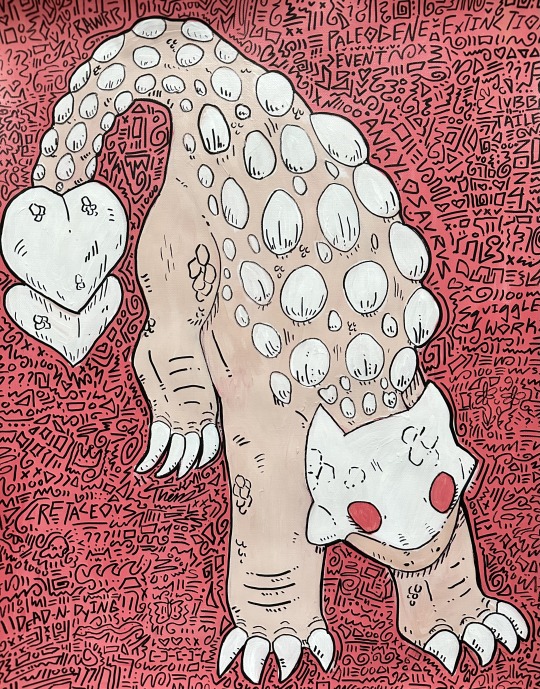
An ankylosaurus! This armored little guy is absolutely covered in keratin and plates of bones to protect itself. So much so they even had these special bones in their eyelids also the clubs on the end of their tail could be swung so hard they could crush bone and are often compared to tanks. What’s really cool is one of the best preserved dinosaurs found is an ankylosaur and I heavily recommend looking it up and seeing for yourself how cool these guys looked and how much we learned about them from this one little guy.
#art#traditional art#thoms art#doodle#artists on tumblr#painting#acrylic#cute animals#inkdrawing#animals#dinosaur#ankylosaurus#jurassic park#jurassic world#cretaceous period#creature#fun facts
8 notes
·
View notes